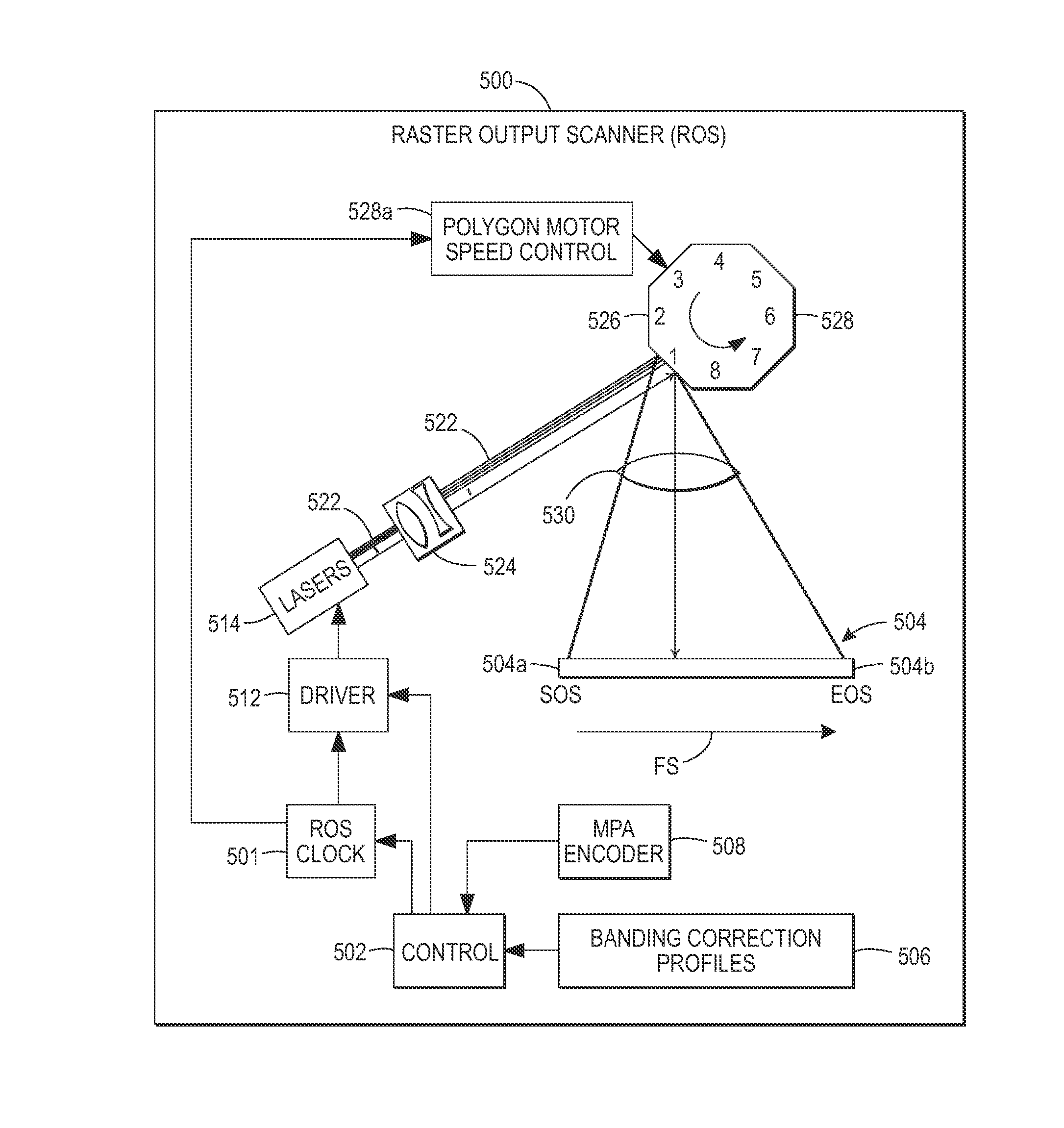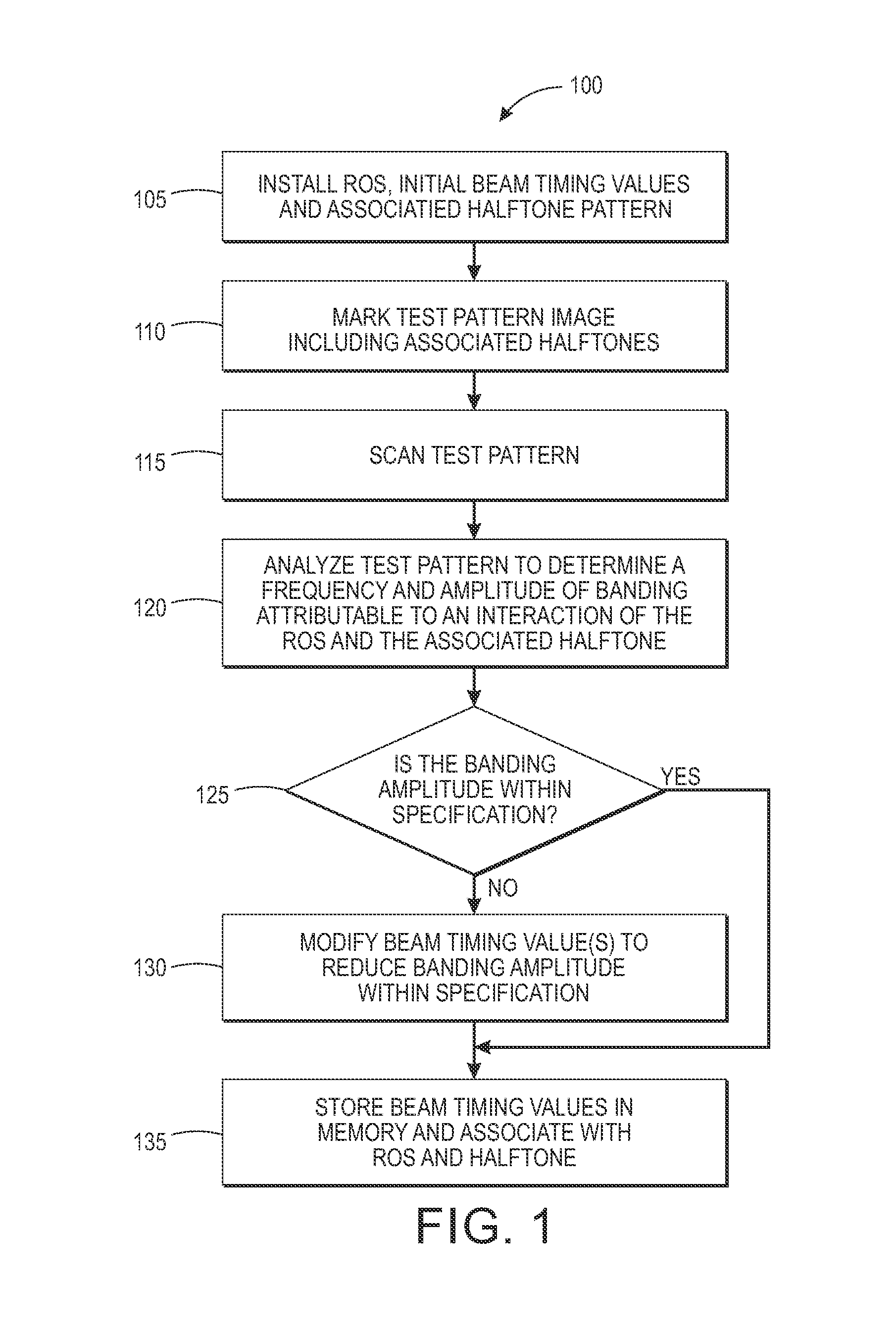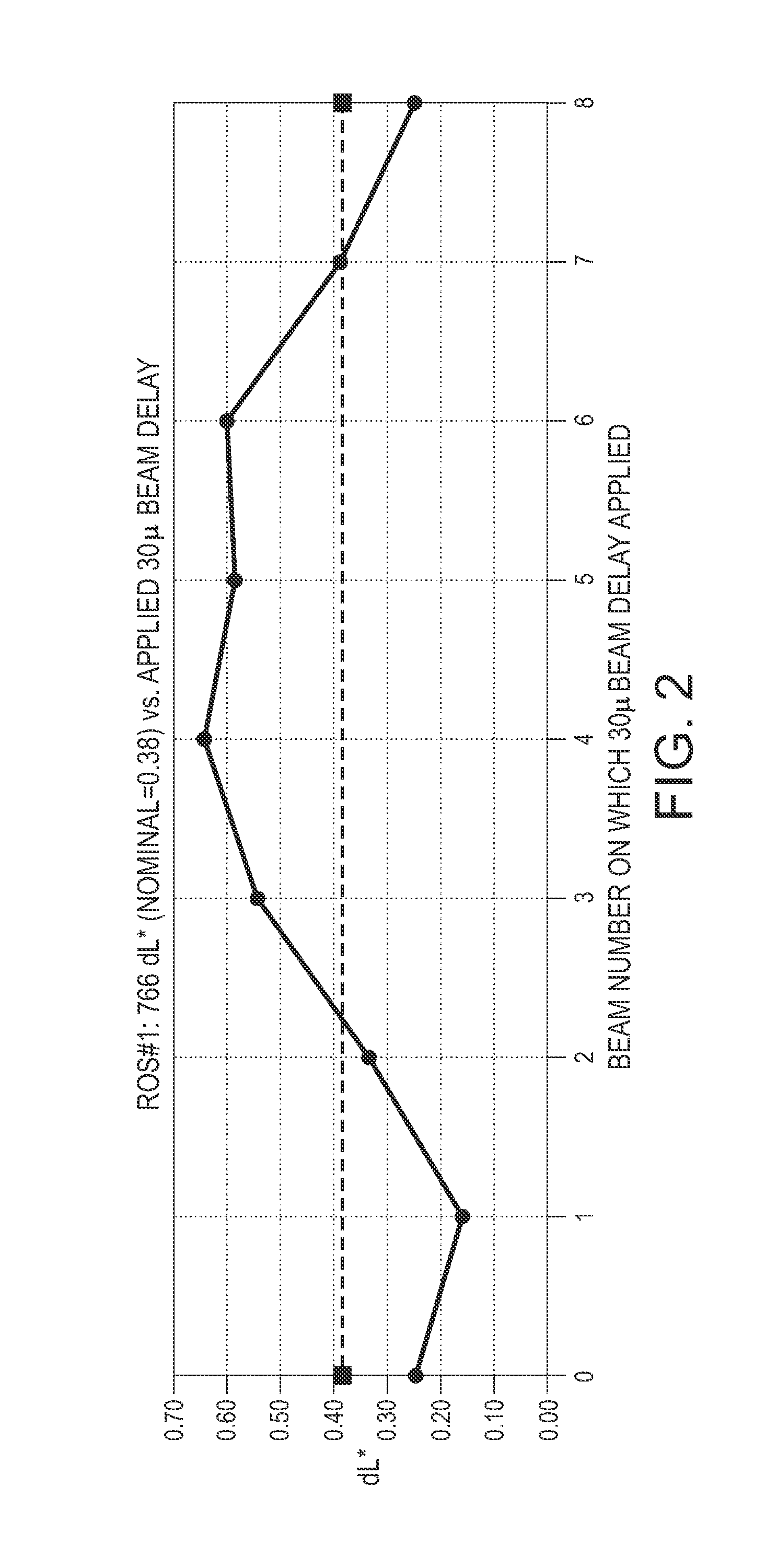Electronic banding compensation (EBC) of halftone-interaction banding using variable beam delays
a delay delay and halftone technology, applied in the field of printing systems, can solve the problems of periodic density variation in the process direction, inacceptable reprographic printing system, and variation in the density of the marking material fused to the final print medium
- Summary
- Abstract
- Description
- Claims
- Application Information
AI Technical Summary
Benefits of technology
Problems solved by technology
Method used
Image
Examples
Embodiment Construction
[0025]Provided herein are methods and systems to compensate for banding caused by the interaction of Raster Output Scanner (ROS) variations with a halftoned image. The interaction of ROS variations with a halftoned image can cause an objectionable printed output density variation at a spatial frequency that is visually perceptible. The disclosed method and system provide the use of one or more fast scan beam delays operatively associated with a multibeam ROS as an actuator for a compensation scheme to reduce banding. Examples of a multibeam ROS include, but are not limited to, a VCSEL (Vertical-Cavity Surface-Emitting Laser), and multibeam laser diodes. The fast scan beam delays may be positive or negative to delay or advance, respectively, to a fast scan beam relative to one or more other beams or a nominal value. The provided actuator has enough compensation authority to perform the compensation function. Tests demonstrate the compensation holds for a particular ROS over different...
PUM
 Login to View More
Login to View More Abstract
Description
Claims
Application Information
 Login to View More
Login to View More - R&D
- Intellectual Property
- Life Sciences
- Materials
- Tech Scout
- Unparalleled Data Quality
- Higher Quality Content
- 60% Fewer Hallucinations
Browse by: Latest US Patents, China's latest patents, Technical Efficacy Thesaurus, Application Domain, Technology Topic, Popular Technical Reports.
© 2025 PatSnap. All rights reserved.Legal|Privacy policy|Modern Slavery Act Transparency Statement|Sitemap|About US| Contact US: help@patsnap.com



